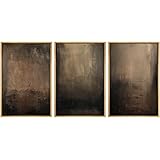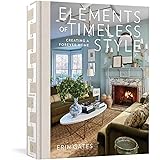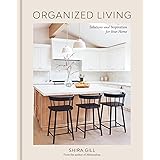Transforming a house into a truly inviting and comfortable sanctuary goes far beyond simply adding a throw blanket or lighting a candle. As explored in the insightful video above, achieving a deeply felt sense of coziness in your home hinges on understanding the subtle yet powerful principles of design psychology. It is by applying these timeless, architect-approved strategies that any space, regardless of budget or existing style, can be imbued with warmth and a welcoming atmosphere. This guide delves deeper into the psychological underpinnings of creating a truly cozy home, offering actionable ways to implement these concepts.
The Undeniable Impact of Warm Lighting on a Cozy Home
One of the most immediate and profound changes that can be made in any living space involves its lighting. The distinction between a cozy and a cold room is frequently determined by the color temperature of its light sources. It is advised that white-colored light bulbs be avoided at all costs if coziness is the goal. Instead, a warmer, yellowish light, specifically in the 2700K to 3000K range, is consistently preferred for its ability to mimic the natural, relaxing glow of a sunset.
This preference is deeply rooted in human history and psychology. Throughout generations, the transition from bright daylight to the warm hues of sunset has signaled a period of winding down, relaxation, and communal activities. This natural shift in light historically marked the end of demanding tasks and the beginning of rest, influencing our subconscious perception of comfort. When our indoor lighting replicates this natural phenomenon, a profound sense of ease and well-being is often experienced. Therefore, selecting bulbs within this specified Kelvin range is a fundamental step toward cultivating a truly cozy home environment.
Embracing Earthy Tones and Authentic Natural Materials
Beyond lighting, the colors and materials present in a room play a critical role in its perceived warmth. A room that features a palette of warm, earthy tones such as deep browns, rich greens, and subtle hints of red naturally feels more enveloping and comfortable. This is a stark contrast to spaces dominated by bright whites and cool grays, which, while appearing clean and sleek, often lack the desired cozy ambiance. Christopher Alexander, in his influential book “A Pattern Language,” extensively discusses the impact of colors, noting that the greens and grays commonly found in institutional settings can feel depressing and cold.
Furthermore, the integration of natural materials is paramount for creating a connection to the outdoors and enhancing feelings of warmth. According to the concept of biophilia, humans possess an innate tendency to connect with nature and other living systems. Surrounding ourselves with natural elements, reminiscent of forests or mountains, promotes a sense of ease and relaxation, directly contributing to a cozier atmosphere. Real wood, in particular, is an excellent choice for furniture, accents, and decor, providing timeless appeal and inherent warmth. Materials like natural stone, marble, or terrazzo can also be incorporated into countertops or decorative pieces, while smaller items such as cork coasters or woven baskets further enhance this natural, authentic feel.
Adding Depth and Engagement Through Texture
In modern minimalist design, an essential element contributing to coziness is frequently overlooked: texture. A living room might feature a thick wool rug, natural wood paneling, and plush velvet cushions, all harmoniously combined with soft, layered lighting, to create an incredibly warm and inviting space. Conversely, a room with smooth white walls, sleek shiny floors, and polished plastic furniture often feels cold, flat, and visually unengaging. This lack of varied surfaces creates what some refer to as “visual silence,” a flatness that can be not only boring but also tiring to the eye, rendering the space lifeless despite its tidiness.
Texture is abundant in nature, from the rough bark of a tree to the varied patterns on leaves and the distinct feel of riverbed stones. Our eyes are drawn to this inherent richness and engagement. To reintroduce this vital element into your home and enhance its coziness, a mix of materials such as velvet, wool, and linen should be considered. Bare walls can be transformed with textured wallpaper, wall paneling, or even limewash, which offers both calming colors and a desirable tactile quality. Textured art, woven tapestries, or objects with unique surfaces like brushed metal accents, textured glassware, and clay pots also effectively add depth and visual interest.
The Art of Layered and Uneven Lighting for Ambiance
Uniform, overhead lighting is frequently identified as a primary culprit behind rooms feeling flat and lifeless. In contrast, uneven lighting, characterized by pools of light and soft shadows, mimics the natural play of light found outdoors and is far more inviting. This dappled quality of natural light is constantly in flux, engaging the eye in a subtle, comforting way. To replicate this effect and foster a truly cozy home, the strategic use of lamps throughout a space at night is highly recommended. The main overhead light should be reserved only for emergencies or specific task lighting.
Furthermore, the ancient comfort of flickering firelight holds a primal significance for humans, providing not just warmth but also a deep sense of safety and relaxation. If a fireplace is not available, grouping candles together offers a wonderful alternative, creating a similar warm, yellow glow reminiscent of fire. Installing dimmer switches on lights allows for adjustable brightness, enabling a quick transition to a calmer, cozier atmosphere in the evenings. These intentional lighting choices collectively contribute to a more dynamic and psychologically comforting environment, enhancing the overall feeling of coziness.
Cultivating Enclosure and a Sense of Shelter
The arrangement of furniture and the definition of spaces within a room significantly impact how comfortable one feels. Rooms that are excessively open, with furniture isolated in the center, can evoke a sense of uneasiness. Instead, creating “enclosures” or defined pockets of space helps the brain feel more relaxed and secure. For example, a lone couch immediately feels more grounded and inviting when flanked by a side table, a lamp, and a plant. This concept mirrors the comfort felt when sitting under a tree, where the canopy provides shelter and the shadow casts a defined boundary, enhancing feelings of protection.
This principle of enclosure is applicable across all areas of a home. Spaces with clearly defined boundaries, whether achieved by a canopy over a bed, a pendant light strategically hung above a dining table, or furniture thoughtfully tucked into a corner, contribute to a sense of psychological safety. Such arrangements offer a visual and physical ‘hug,’ allowing occupants to feel more settled and at ease within their environment. This thoughtful spatial definition is a cornerstone in crafting a truly cozy and secure feeling in any home.
Softer Spaces with Curves and Organic Shapes
The shapes and lines present in a home’s design also have a profound psychological effect on its inhabitants. Consider the difference between navigating the gentle, winding paths of nature with its flowing rivers and soft hills, versus moving through a sharp, angular cityscape filled with pointy buildings and harsh edges. The former typically evokes feelings of soothing calm, while the latter, though dynamic, can be perceived as more stimulating or even stressful. Our brains are wired to interpret curves and organic shapes as inherently safe and comforting, associating them with natural forms and softness.
Conversely, sharp, angular shapes can subconsciously signal danger, reminiscent of jagged rocks, thorns, or blades. While dynamic lines can energize a space, for a feeling of calm and coziness, curves are the preferred choice. Incorporating rounded furniture, such as circular coffee tables or sofas with soft edges, significantly contributes to a welcoming ambiance. Adding curvy patterns in textiles or artwork, alongside circular decor items like mirrors and organic-shaped vases, helps to soften the visual landscape of a home, fostering a more relaxed and inherently cozy environment.











